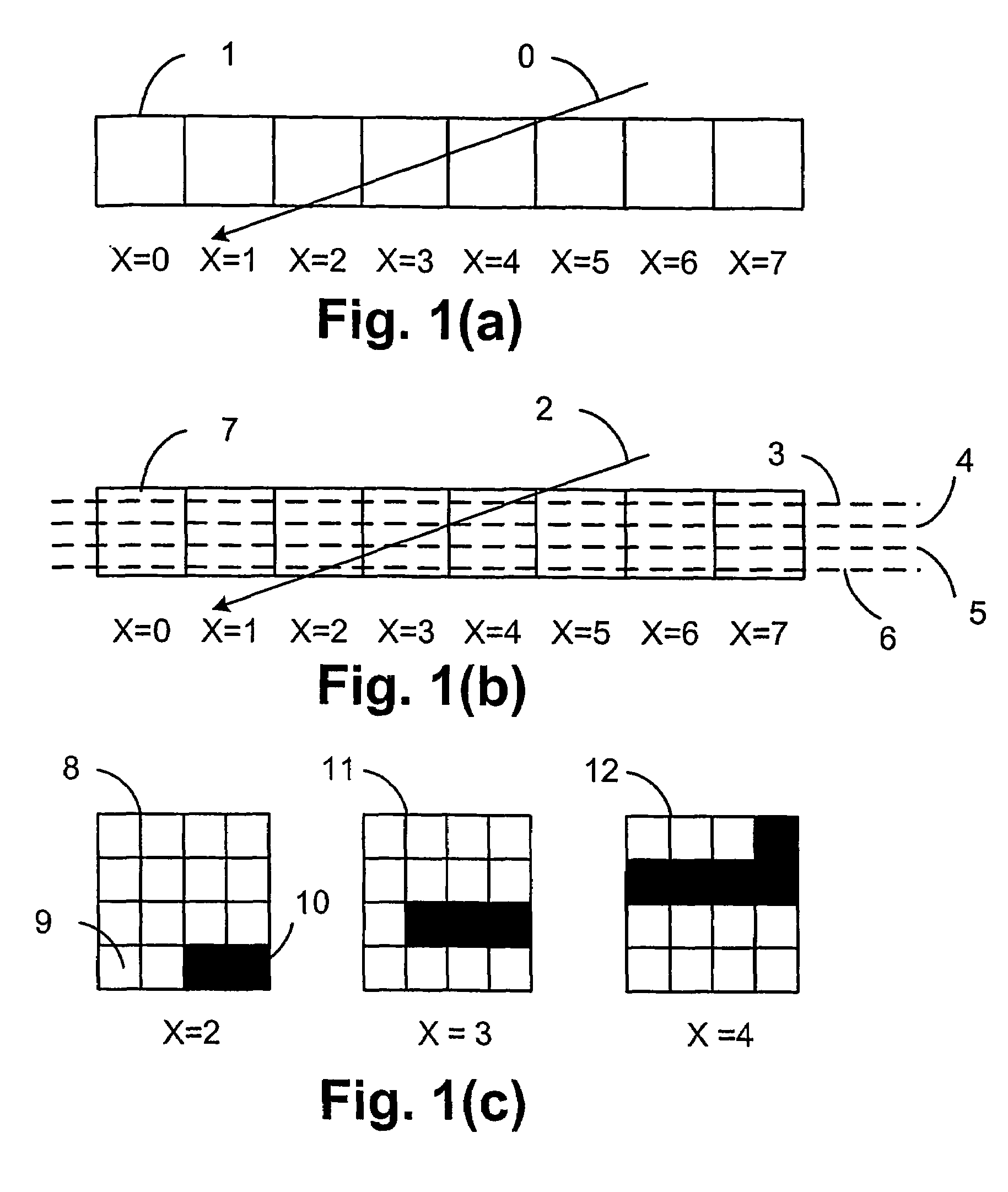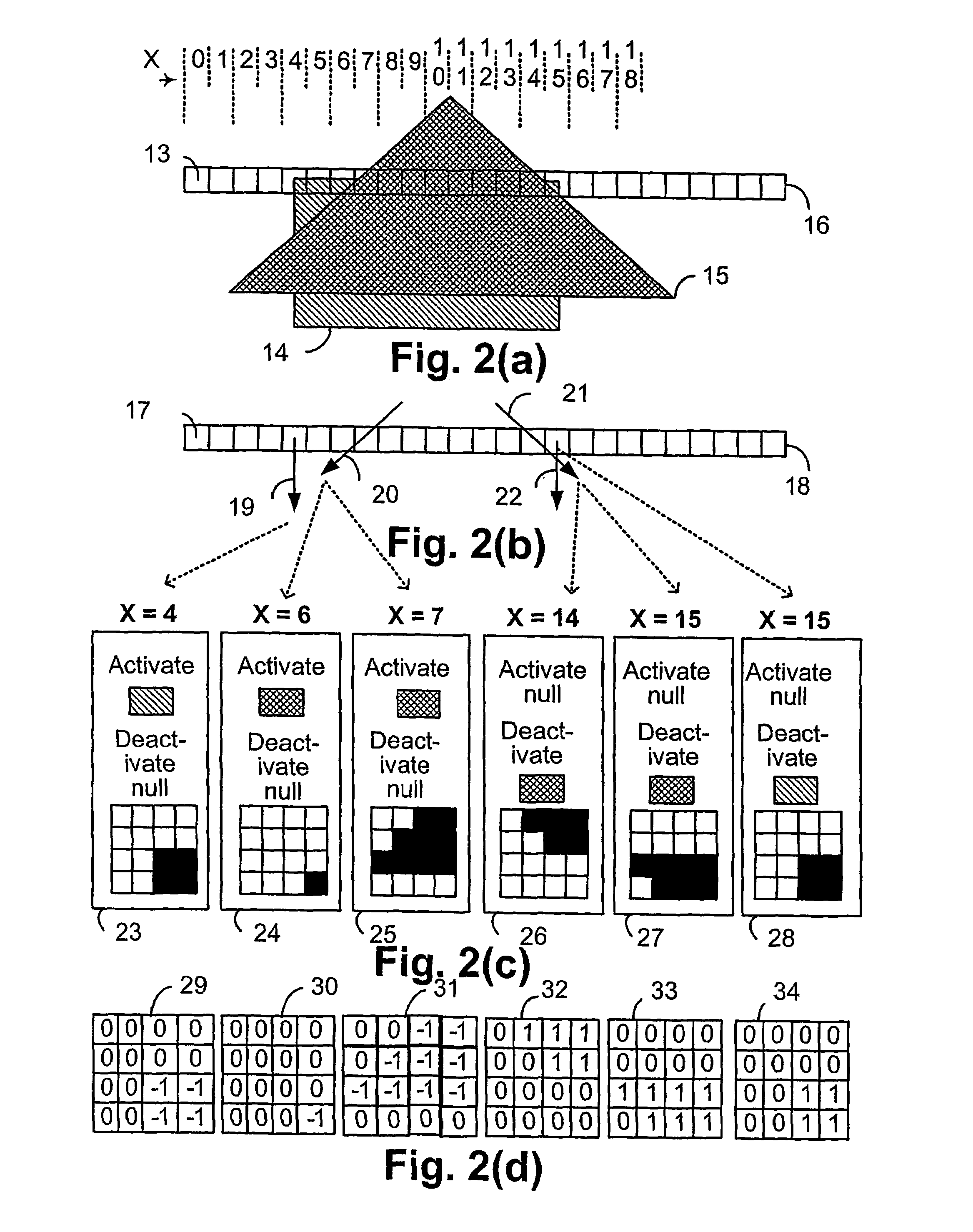Method for tracking depths in a scanline based raster image processor
a raster image and depth tracking technology, applied in the field of rendering graphical objects, can solve the problems of large depths of real-world postscript print rendering jobs, cost of significant additional complexity, and model inability to maintain the complete list internally
- Summary
- Abstract
- Description
- Claims
- Application Information
AI Technical Summary
Benefits of technology
Problems solved by technology
Method used
Image
Examples
Embodiment Construction
Table of Contents
[0097]1. Introduction[0098]1.1. Coordinate spaces[0099]1.2. Graphic objects[0100]1.3. Glyphs[0101]1.4. Z-levels[0102]1.5. Stroking[0103]1.6. Morphing[0104]2. The Driver Module[0105]2.1. Sprites[0106]2.1.1. Sprites: transformation matrices[0107]2.1.2. Graphic objects and their depth[0108]2.2. The display list[0109]2.2.1. Frame rendering[0110]2.2.2. Graphic objects and z-levels[0111]2.2.3. Local depths and absolute depths[0112]3. Transformation, Morphing and Stroking[0113]3.1. Morphing[0114]3.2. Transformation[0115]3.3. Generating Edges[0116]3.4. Decomposition of strokes into edges and z-levels[0117]3.4.1. Stroking a straight edge[0118]3.4.2. Stroking a curved edge[0119]3.4.3. Stroking a join[0120]3.4.4. Stroking Equal or Opposite Edge Joins[0121]3.4.5. Generating end-caps at the end of a path[0122]3.4.6. Endcaps between stroked and unstroked edges[0123]3.4.7. Z-level assignments for opaque strokes[0124]3.4.8. Z-level assignments for transparent strokes[0125]3.4.9. Tr...
PUM
 Login to View More
Login to View More Abstract
Description
Claims
Application Information
 Login to View More
Login to View More - R&D
- Intellectual Property
- Life Sciences
- Materials
- Tech Scout
- Unparalleled Data Quality
- Higher Quality Content
- 60% Fewer Hallucinations
Browse by: Latest US Patents, China's latest patents, Technical Efficacy Thesaurus, Application Domain, Technology Topic, Popular Technical Reports.
© 2025 PatSnap. All rights reserved.Legal|Privacy policy|Modern Slavery Act Transparency Statement|Sitemap|About US| Contact US: help@patsnap.com



